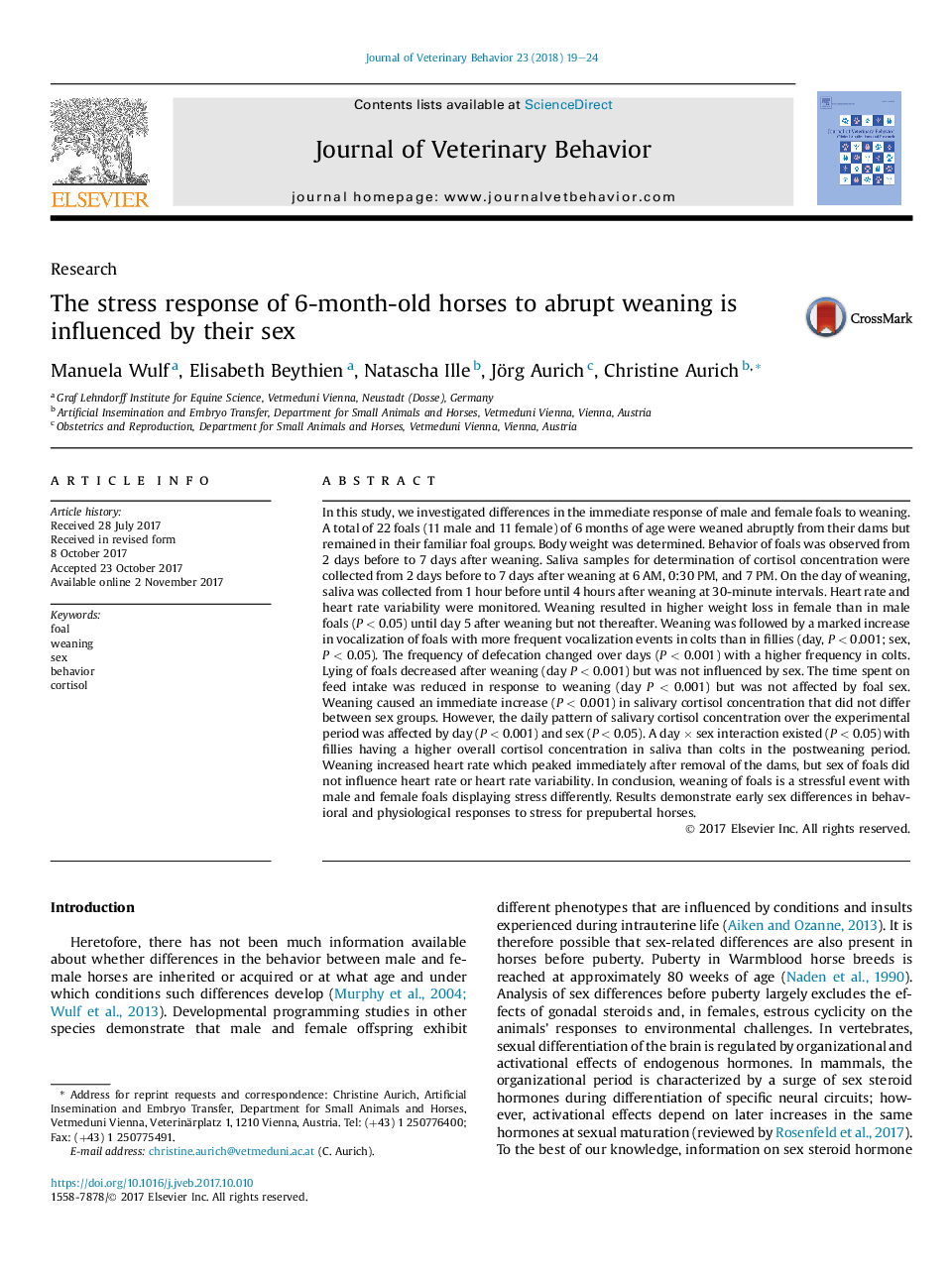| Article ID | Journal | Published Year | Pages | File Type |
|---|---|---|---|---|
| 8484195 | Journal of Veterinary Behavior: Clinical Applications and Research | 2018 | 6 Pages |
Abstract
In this study, we investigated differences in the immediate response of male and female foals to weaning. A total of 22 foals (11 male and 11 female) of 6 months of age were weaned abruptly from their dams but remained in their familiar foal groups. Body weight was determined. Behavior of foals was observed from 2 days before to 7 days after weaning. Saliva samples for determination of cortisol concentration were collected from 2 days before to 7 days after weaning at 6 AM, 0:30 PM, and 7 PM. On the day of weaning, saliva was collected from 1 hour before until 4 hours after weaning at 30-minute intervals. Heart rate and heart rate variability were monitored. Weaning resulted in higher weight loss in female than in male foals (P < 0.05) until day 5 after weaning but not thereafter. Weaning was followed by a marked increase in vocalization of foals with more frequent vocalization events in colts than in fillies (day, P < 0.001; sex, P < 0.05). The frequency of defecation changed over days (P < 0.001) with a higher frequency in colts. Lying of foals decreased after weaning (day P < 0.001) but was not influenced by sex. The time spent on feed intake was reduced in response to weaning (day P < 0.001) but was not affected by foal sex. Weaning caused an immediate increase (P < 0.001) in salivary cortisol concentration that did not differ between sex groups. However, the daily pattern of salivary cortisol concentration over the experimental period was affected by day (P < 0.001) and sex (P < 0.05). A day à sex interaction existed (P < 0.05) with fillies having a higher overall cortisol concentration in saliva than colts in the postweaning period. Weaning increased heart rate which peaked immediately after removal of the dams, but sex of foals did not influence heart rate or heart rate variability. In conclusion, weaning of foals is a stressful event with male and female foals displaying stress differently. Results demonstrate early sex differences in behavioral and physiological responses to stress for prepubertal horses.
Related Topics
Life Sciences
Agricultural and Biological Sciences
Animal Science and Zoology
Authors
Manuela Wulf, Elisabeth Beythien, Natascha Ille, Jörg Aurich, Christine Aurich,
